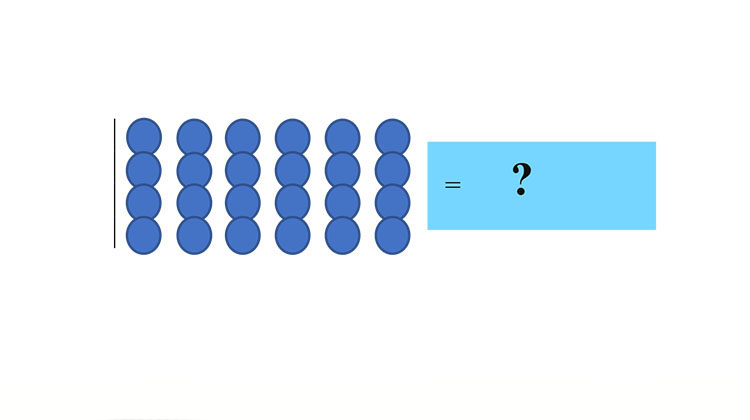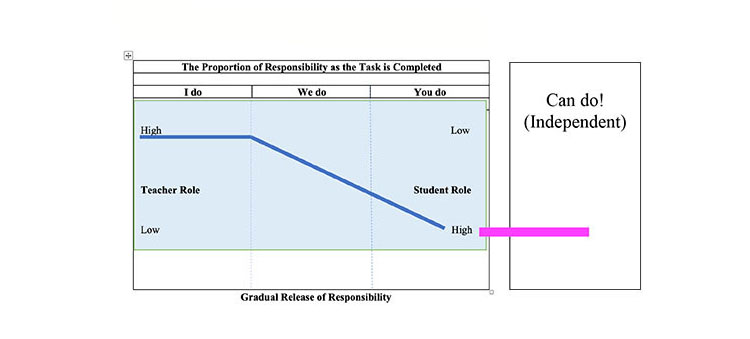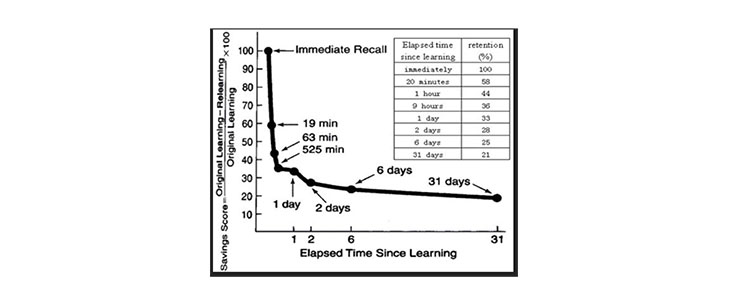Explicit Instruction, and 6 X 4 =

The Pedagogic Wars are still alive and well. Teacher Directed Learning has emerged as a winner in the Effectiveness Stakes as the state and national testing programs shine search-lights into the darkest recesses of classrooms, exposing wastrel practices, particularly during the Pandemic. Simon Lock (2021) in the prestigious Times Educational Supplement quoted the Dutch educator, Paul Kirschner, who had observed:
“I think [remote learning] shone a light on the necessity of good, explicit direct instruction,” said Kirchner, speaking at the World Education Summit on Tuesday.
“I think more and more teachers are coming to the conclusion that explicit instruction isn’t a regressive approach to instruction only propagated by dinosaurs and people who hate children.”.
The use of the words explicit and direct in teaching and learning indicate that the lesson content is important for the student, and the teacher will ensure learning. Consequently, and rather interestingly the insertion of the word “explicit” into a description of a variety of circumforaneous teaching practices is now considered a “Get Out of Gaol Free” card by the practitioners of the faux versions of explicit instruction frameworks.
6 X 4 =
The Ten Characteristics of Didactic, Explicit Teaching and Learning
For the authors of this paper, the key, essential indicators of explicit or direct instruction include these concepts and practices:
- Instruction - the teacher has the legal and moral authority to define the learning tasks and processes. Teachers are not “guides on the sides” when instructing;
- The word explicit is a signal that the learning material must be learned to a high level;
- Mastery - the intent of this teaching process is that the students attain mastery in essential learning. Military instruction reminds their instructors that if the student has not learned the lesson content then the teacher has not taught the lesson effectively;
- GRR - the gradual release of responsibility ensures student competence and ownership of the learning;
- I do, We do, You do, - these are the phases that characterise GRR accompanied by appropriate pedagogic strategies;
- Practise, practise, practise - overlearning is critical for the essential learning tasks. Automaticity - essential facts, formulae, skills need to attain automaticity status. Rote learning still has a metacognitive place for important knowledge and skills;
- Daily and Weekly Reviews - all important learning needs constant review so the learning loss is lessened, Consider the Ebbinghaus Forgetting Curve;
- Scope and sequence - the teachers need to control the timing and content of the learning process, not some external “curriculum expert”;
- Check For Understanding - teachers must actively CFU, in formative and summative senses; and
- The teachers’ job is to make these learning experiences interesting and enjoyable, and even FUN.
Firstly, the teachers have the knowledge and skills to effectively instruct students on what must be learned, and they also have the legal responsibility to do that. In the constructivist era teachers were reduced to being “guides on the sides” and “partner teacher”. This demeaning positioning does not fit in a contemporary culture of accountability that identifies active teaching as having significant influence on student achievement. In the case of enquiry Dinham (2016, p. 14) noted that students must have “a deep foundation of factual knowledge, understand facts and ideas in the context of a conceptual framework, and organise knowledge in way that facilities retrieval and application.” All of which are achieved via the aforementioned characteristics.
Secondly, the word explicit is an umbrella term that signals that the lesson content is important and must be learned. The commercial strategies such as DI, EDI, EI and di all fit within the explicit descriptor, and all focus on teaching to mastery.
Thirdly, there are aspects of the curriculum that must be learned because future learning may be dependent on the acquisition of that knowledge and skills. A point that Hirsch (2010) makes when referring to curricular incoherence in The Schools We Need. We use the words mastery or competence to describe that essential learning. The problem that schools face is that there is no separation in the learning program (curriculum) of essential and non-essential learning. Backward mapping exercises of learning pathways are needed to give teachers some direction for what is essential and requiring mastery-level understanding and skills.
Fourthly, with all learning programs the learner has to acquire the skills and knowledge being taught and then be able to independently use that knowledge and skills. The Gradual Release of Responsibility looks like this:

Figure 1: The Gradual Release of Responsibility (Adapted from Pearson & Gallagher, 1983).
Fifthly, the mantra “I do”, “We do”, and “You do” a phrase coined by Anita Archer, shows the process of teaching and then releasing responsibility. Because these three acts take place in a teacher controlled environment, we propose examining what happens in a fourth stage of real independence, outside that teaching environment. Hence: I do (teacher)> We do (teacher and student)> You do (student)> CAN DO (outside classroom and in the field- independent).
Sixthly, teachers have come through an era where rote learning was anathema. Learning theory clearly demonstrates that practising is important in embedding essential knowledge and skills. This automaticity, relative to learning, frees us for deeper thinking and more complex problem solving. It is useful to acknowledge Ebbinghaus’s Forgetting Curve (see Figure 2, below) because without daily reviews much of the lesson is just forgotten, something that Graham and Pegg (2010) utilised in the development of QuickSmart to address learning gaps for struggling children. Automaticity in learning is no different to learning the skills used in driving a car. Just do it!

Figure 2: Ebbinghaus’s Forgetting Curve.
Seventhly, the daily and weekly reviews are essential in signalling to students the knowledge and skills that they need, and overlearning supports this. Students need to know multiplication tables, combinations, time, formulae and a host of other material, automatically. It is this foundational knowledge that allows them to build deeper understandings. These revisionary exercises are highly interactive, and students thrive on the high-speed, exciting exchanges that far exceed what is seen in most classrooms. So, what is the formula for the perimeter of a circle?
Eighthly, teachers in each school need to control the scope and sequences of the learning programs they use, because every student is different, and every classroom is different. Sidney Dobrin (1997, p. 7), quoting Patricia Bizzell, make the point that “… while theory helps inform pedagogy, pedagogy must be indigenous,” which in this context simply means responding to local needs. The external curriculum “experts” often lack teaching experience and the “one size fits all”, normatively referenced approach is a bother. And, this school-based approach allows variations that are built on local resources and interests. Furthermore, it allows school staff to identify the gaps and target intervention when, and if, required.
Ninthly, formative and summative corrections are hugely important to students’ learning. The check for understanding process occurs all of the way through the lesson and brilliant teachers identify problems before they happen. And, the debugging process that is used in the Math Mastery Series (2022) (EMM, JEMM, JEMM+) is a great example of a timely correction process (see Boyd, MacNeill, & Sullivan, 2019).
Tenthly, the naysayers love to put explicit and direct instruction down by painting it as a joyless act. While the job of all teachers is to motivate and engage students in the learning act, people often forget that the love of learning is one of the major drives that have pushed human existence forward. Most teachers have experienced the joy of this in their classrooms, and it is what keeps teachers motivated.
A Field Guide to Didactic Explicit Teaching Models
There is a considerable body of literature that now describes explicit/direct teaching models, and the Figure 3 (below) describes five of the didactic variations.
| The Boyd MacNeill Didactic, Explicit, Teaching Field Guide |
|||||||||
| DI Programs: Maths Mastery Series (EMM, JEMM+); Spelling Mastery | TAPPLE Teach first, Ask a question, Pair share, Pick a non volunteer, Listen to the response, effective feedback |
di (lower case) direct instruction. ROSENSHINE |
Military instruction | Tom Sherrington WALKTHRUs Five Step Guides to Instructional Coaching |
|||||
| Mastery | Overlearning Automaticity | Guided Practise - You do | Students practise independently | Daily, weekly reviews | Overlearning for mastery |
CFU Check for understanding |
You do | Check for understanding | YOU DO |
| Checks for learning | Formative Assessment | Skill development - We do | Formative learning. Rule of two | Independent practise | Work scaffolded tasks | Explanation >limitation | I do > we do | Ask questions | Questioning and feedback CFU |
| Small learning bites | Complete small learning steps | Presentation - I do | Small steps | You do - provide models | Acknowledge success | Presentation | Instructor constantly checks for understanding | Scaffold difficult tasks | Worked models Scaffold |
| Teacher does | Students follow instructions | Learning objective/prior knowledge | Builds on previous learning | I do > We do - plan small steps | Check for prior learning | Lesson objective. Prior knowledge revision | Discussion | Worked examples, backwards fading | I DO > WE DO |
| Teacher says (Follows scripted program) | Students follow teacher's instruction | Teacher centred (directed) | Students follow teacher's instructions | Teacher leads learning - GRR gradual release responsibility | Student follows teacher's directions | Instructor controls lesson | Students are required to attend and learn - can be a life and death issue | Present new material in small steps | Follow teacher instructions |
| Teacher | Student | Teacher | Student | Teacher | Student | Instructor | Student | Teacher | Student |
| DI: Direct Instruction (Engelmann) | EDI Explicit Direct Instruction (Hollingworth & Ybarra | di (lower case) direct instruction Rosenshine/Sherrington |
Military instruction always takes the same lesson format. |
Tom Sherrington Teaching Walkthrus - Rosenshine's Principles of instruction | |||||
The Didactic and Hybrid Explicit Teaching Models
At the end of the day, the didactic teaching and learning models depend on two mandatory factors:
1 The teacher creates and controls the teaching and learning program (the WHAT & HOW); and
2 The aim of explicit teaching and learning is mastery (the OUTCOME).
As the American Department of the Army (1954) military instruction manual points out, that if the student has not learned then the teacher has not taught (successfully). Learning is the sole indicator of a successful teaching process.
What we can see is that some teaching models use the terms explicit or direct as adjectives in ordinary language usage. This will complicate the issue because the proposed models do not exhibit all of the characteristics of the didactic, explicit teaching models.
Oh yes! 6 X 4 =
Well, in the time it has taken for you to read through this article, has the answer to the problem changed?
6 X 4 = ?
No, and the fact remains that regardless of the time we ponder this question the answer will remain unchanged. Even Piaget, in his later years revised his theory of mental development, concluding that the stages of mental growth did not reflect a purely developmental process, that being an approach that says the students must understand a concept, through maturity, before progressing. Rather, they were powerfully influenced by specific content of education. To this end, training, as conceded by Piaget is just as potent as growth (Hirsch (2019). We would then argue that in many cases growth will not occur without training and in the case of our question, with the actual application of the algorithm.
References
Boyd, R., MacNeill, N., & Sullivan, G. (2019, February). No Failure Learning: Growing the skills and knowledge in every student. Education Today, 19(1), 32-34. http://www.educationtoday.com.au/article/No-Failure-Learning-1507
Department of the Army (1954). Techniques of military instruction. Washington, DC: Department of the Army.
Dinham, S. (2016). Leading learning and teaching. ACER Press.
Dobrin, S.I. (1997). Constructing knowledges: The politics of theory-building and pedagogy in composition. State University of New York Press.
Graham, L, & Pegg, J. (2010). Hard data to support the effectiveness of QuickSmart Numeracy. Learning Difficulties Australia Bulletin, 42(1), 11-13.
Hirsch Jr, E. D. (2010). The schools we need: And why we don't have them. Anchor.
Hirsch, E. D. (2019). Why knowledge matters: Rescuing our children from failed educational theories. Harvard Education Press.
Lock, S. (2021, March 24). Kirschner: Direct instruction is not just for dinosaurs. TES (Times Educational Supplement). https://www.tes.com/magazine/archived/kirschner-direct-instruction-not-just-dinosaurs
Math Mastery Series. (2022). Elementary Math Mastery (EMM). https://mathmasteryseries.com.au
Pearson, P.D., & Gallagher, M.C. (1983). The instruction of reading comprehension. Contemporary Educational Psychology, 8, 317-344.